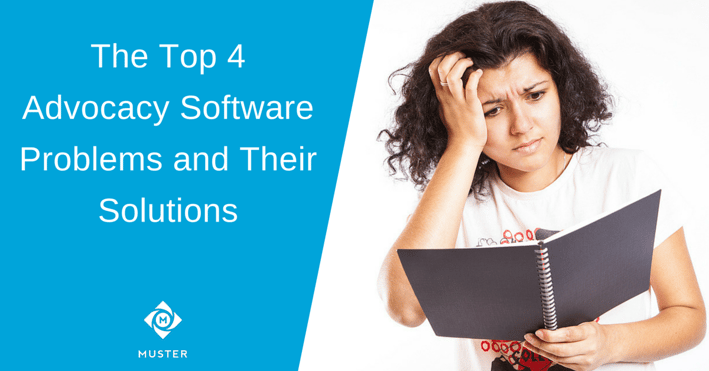
The use of digital advocacy tools and grassroots advocacy software is on the rise. Increasingly, association professionals and those involved in government relations are using advocacy software to supplement their traditional public policy strategies.
If you are considering advocacy software for your organization, it is likely that you are doing a significant amount of research. You have probably discovered that there are several advocacy platforms to research, and ultimately purchase. If you're already using a digital advocacy tool, you may have encountered some challenges that you hadn’t anticipated and may be searching for tips and tricks to optimize your online advocacy.
The purpose of this article is to help you address any of the challenges you might be anticipating or experiencing with advocacy software.
Problem 1: Form Letters or Messages That Appear to Be Form Letters
First off, the great thing about advocacy software is that it allows your time-starved members, and supporters, to easily communicate with their government representatives. However, the messages and communications sent to elected officials may occasionally have the exact same subject line, or body of the email message. This uniformity will leave the elected official wondering whether or not the message is coming from a real constituent, or if it is coming from an organization who is blasting an official without the consent of constituents. The same subject lines in an advocacy campaign may also minimize the impact of the message because it might seem too impersonal (check out our post on “slacktivism” here).
Solution: Find an advocacy software provider that allows your supporters and members to edit the subject lines. Also, search for and use software that does not use HTML template-based emails. The email or letter to elected officials should be a plain, normal email. There shouldn’t be any company logos or strange formatting in the message to the elected official.
We would like to hear from you. What are your biggest advocacy challenges? Please click here for more information about advocacy software or to speak to a Muster advocacy specialist.
Problem 2: Representatives Can’t Tell if the Message is From a Constituent
This is a huge problem. Many elected officials, especially at the state-level, really only care about the voices of their constituents. If messages being sent to representatives do not clearly present the constituent’s address, the representative will not know whether or not the message is sent from someone in her/his district.
Solution: Find a software provider that automatically inserts the constituents address at the end of the message. If you are using a software provider that does not insert the constituents address, make sure you ask your members and supporters to include their address at the end of their message.
Problem 3: Your Organization’s Members and Supporters Are Not Opening Your Messages
Your members and supporters want to hear from you, but sometimes you need to work to get their attention too.
Solution: Optimize your subject lines and the time of day that you send out “Action Alerts”. Here are a few tips: 1) include the word “alert” in your emails to your membership, and 2) emails sent earlier in the day receive a higher open-rate and a higher click-rate.
(For more information on how to improve your email open rates you may be interested in reading: How to Increase Your Grassroots Advocacy Open-Rates).
Problem 4: Managing New Advocates
When you start to utilize advocacy software, there will be greater buzz around your public policy initiatives. You will need to manage new advocates and new members that join your advocacy network.
Solution: Keeping new advocates updated in your database or AMS can be challenging. If it is possible, find an advocacy software solution that integrates with your association management software. If that isn’t possible, check to see what kind of list management your advocacy provider has. For example, Muster’s software allows you to segregate and move new advocates into new segments.
It is no coincidence that the Muster team has been able to curate a list of ideas for these advocacy challenges. We are constantly scrutinizing our advocacy software and searching for ways to improve. We work closely with our clients to listen to their challenges and to implements solutions.
If you enjoyed this article you may also enjoy reading:
Four Ways to Create Buzz For Your Digital Advocacy Campaign
